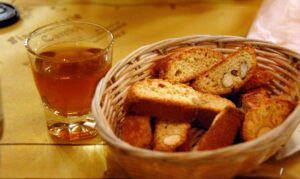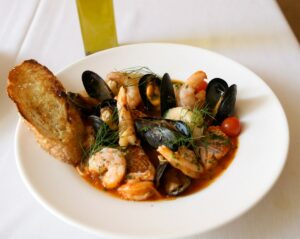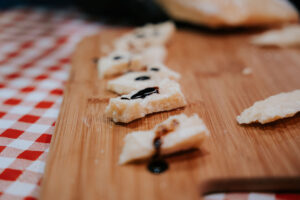Last Updated on November 29, 2025 by Emma Fajcz | Published: February 3, 2022
The ubiquity of Italian restaurants around the world can be both a blessing and a curse. On the plus side, a very basic understanding of Italian food terms gives travelers something of a confidence boost before they visit Italy. The problem, however, is that this same basic understanding may also bring a false sense of security.
Take, for instance, the assumption in the title of this very article—that Tuscan cuisine is full of unique pasta dishes. Here’s the surprising truth about Tuscan pasta dishes: most traditional Tuscan cuisine is not about pasta.
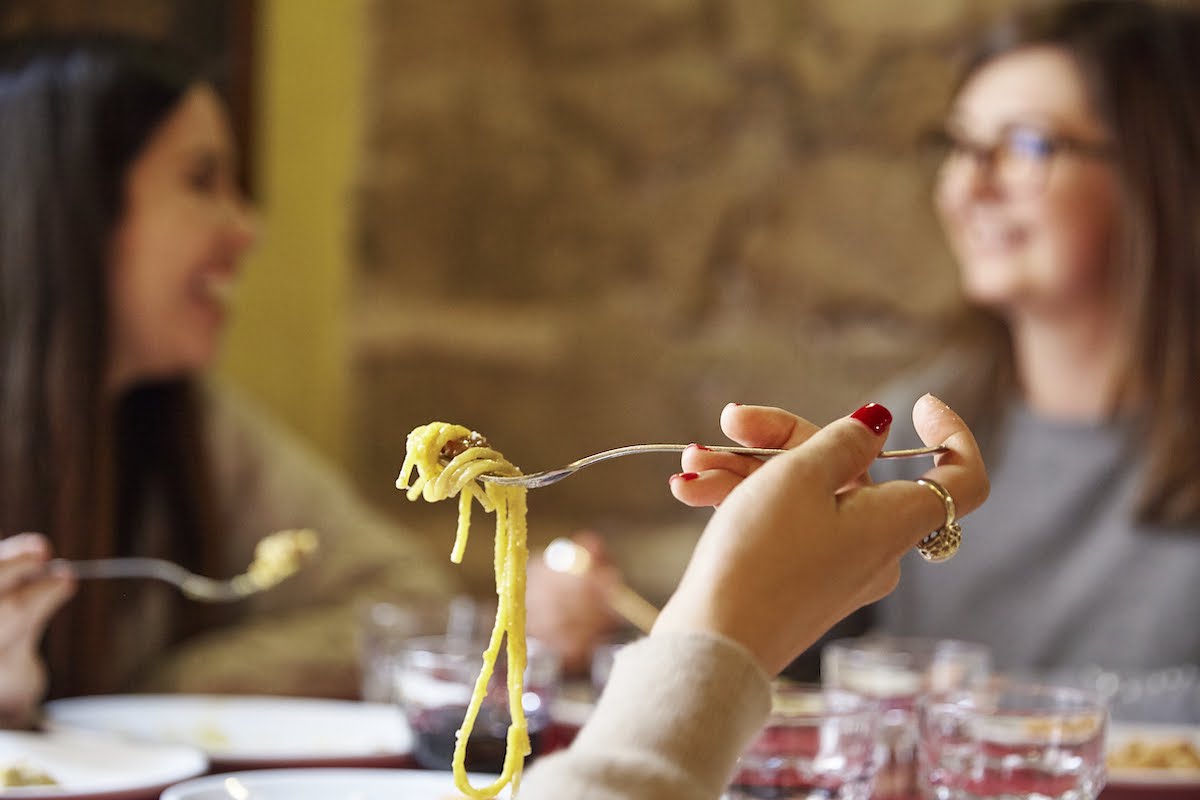
Many Italophiles (including this author) argue that there’s no such thing as “Italian food,” since it’s intensely regional—and pasta is no exception. There are some Italian regions that are well-known for their pasta dishes (Emilia-Romagna and Campania spring to mind), but Tuscany is not one of them. There are a few notable Tuscan pasta dishes, which we’ll cover here, but for the most part Tuscan cuisine is not a pasta-heavy one.
Table of Contents
Why You Won’t Find Many Tuscan Pasta Dishes in Florence
Tuscany’s main culinary contributions have roots in cucina povera, one-time peasant food that is often dressed up quite fancily these days. Think hearty bean soups thickened with Tuscany’s traditional salt-free bread (ribollita and pappa al pomodoro are two great examples), or cheaper meat cuts the Tuscan nobility used to discard (Florence’s famous lampredotto sandwiches are made with tripe).
Of course, in any tourist destination as popular as Tuscany, there will be local restaurants that endeavor to give the paying public what it wants. So, yes, you will find plenty of restaurants in Florence and elsewhere in Tuscany that routinely offer multiple pasta dishes on their menus. And plenty of those will be superb, even if they’re not quintessentially Tuscan.
Travel Tip: Since Tuscany isn’t known for its many pasta shapes, a great way to eat truly Tuscan pasta dishes is to concentrate on the sauce. And one of the easiest ways to find out what sauce ingredients are local and in season is to browse an outdoor market. Make a mental note of whatever is in profusion among the stalls and then keep an eye out for that ingredient on local menus.

Tuscan Pasta Shapes and Sauces
Truly Tuscan Pasta
While most Tuscan dishes aren’t pasta-centric, there are several types of pasta that have origins in Tuscany. Some of them remain so localized that they can be challenging to find outside their hometown.
- Pici: There’s one Tuscan pasta that is a perfect example of how locals made do without more costly ingredients. Pici consists of flour, salt, and water or olive oil—but no eggs. It looks like spaghetti, but it’s quite a bit thicker. It’s one of the oldest known pastas, thought to date back to the Etruscans.
- Pappardelle: Tuscany’s most popular egg pasta shape is pappardelle. These long, wide pasta strips are regularly found on menus today, but since eggs were once a luxury, pappardelle was originally considered a pasta only for special occasions.
- Testaroli: Another ancient pasta that’s said to date back to the Etruscan era is testaroli. It’s a simple pasta (also made without eggs), with triangular or square pieces cut from a larger crepe-sized piece of dough. While pici is still a common sight on Florentine menus, testaroli is less so.
- Tortelli Mugellani: The town of Mugello has long been famous for its chestnuts, and this is where tortelli Mugellani comes from (though tortelli isn’t solely a Tuscan pasta shape). These are large, stuffed pasta squares that were originally filled with chestnuts, though today they’re filled with potatoes.
- Tortelli Maremmani: The thing that makes this particular tortelli Tuscan is that it’s fairly common in the coastal Maremma part of the region. These extra-large pasta pillows are stuffed with ricotta and spinach. You may also see this dish listed as “ravioli Maremmani.”
- Chestnut flour pasta: Closer to Lucca is another town that’s well-known for growing chestnuts—Garfagnana. Chestnuts (castagna in Italian) are used in many local dishes, including grinding them into flour (farina di castagna) that is then used to make pasta.
- Tordelli: Since the name is similar to “tortelli,” you may already have a good idea of what kind of pasta this is. Tordelli Lucchese is a stuffed pasta from the city of Lucca, typically in the shape of a half-circle, and usually filled with a mix of ground meat, greens, pine nuts, and raisins.
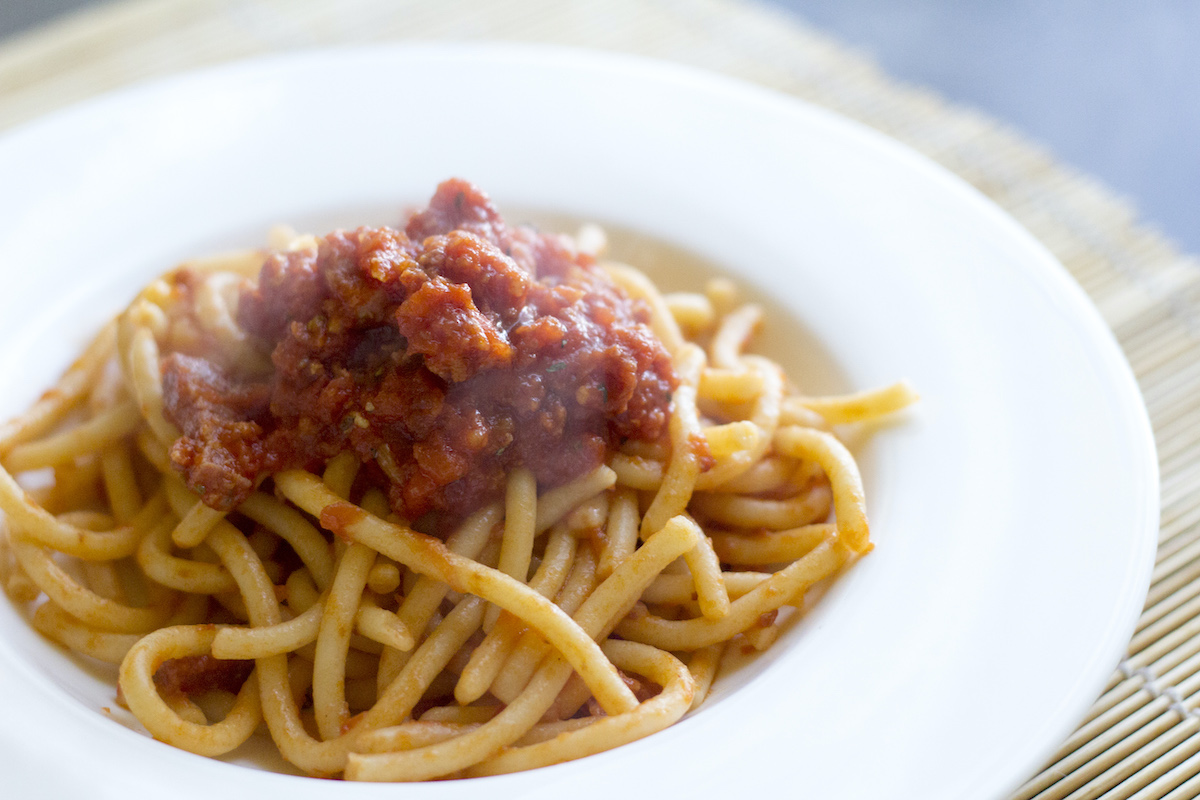
Tuscan Pasta Terms You Need to Know
Besides cuisine, language in Italy is also more of a regional thing than you might expect. While Italian is spoken everywhere today, many people still use regional dialects or terms. Here are a few regional pasta terms you’ll more likely see in Tuscany than elsewhere.
- Tagliatelle: This is another pasta shape that didn’t necessarily originate in Tuscany, but it’s one you’ll see frequently on Tuscan menus. Tagliatelle pasta strips are flat and wide, though not as wide as pappardelle, and in Tuscany they take the place of fettuccine (which you’ll rarely see in the region).
- Topini: Potato gnocchi in Tuscany are often called “topini.”
- Sugo: Whereas other regions in Italy may use the word “ragù” to refer to sauce, Tuscans more often use the word “sugo.” It means the same thing, so the word “sugo” on Tuscan menus will usually be followed by whatever makes up the sauce itself.

Tuscan Pasta Sauces
- Wild boar: Pappardelle is often served in a rich meat sauce, enhancing its “special occasion” status. These days, pappardelle al cinghiale (wild boar) is a common menu item in many parts of Tuscany, though you may also see sauces made with duck (anatra), wild hare (lepre), or porcini mushrooms.
- Breadcrumbs: In a clear nod to cucina povera, even day-old bread gets put to use in pici alle bricole. Breadcrumbs that turn crisp and golden brown in a pan with olive oil and garlic become a tasty (and incredibly inexpensive) dish when mixed with pasta.
- Garlic: Another traditional pici dish is pici all’aglione, or pasta with a simple olive oil and garlic sauce. The garlic in this case is a specific local type that’s much larger than what you’ll find in your local grocery store, and it has a milder flavor.
- Butter and sage: Sometimes pasta sauces are so minimal that you may not even think of them as “sauces” at all. Dressing fresh pasta with a butter and sage sauce (burro e salvia) is a favorite Tuscan way of letting the pasta’s flavor take center stage—especially when it’s a stuffed pasta like tortelli.
- Truffles: Truffles are about the furthest thing from cucina povera today, though they were once considered unfit for consumption. Tuscany’s truffles grace all sorts of local dishes, including pasta. In many cases, truffles are shaved over steaming plates of pasta made with what are otherwise relatively bland sauces, allowing the flavor of the truffles to shine.
- Onions: The town of Certaldo is famous for its sweet onions, so many area restaurants make a special onion sauce for pasta dishes. This is a great example of the kind of hyper-local dish that can be easy to find in and around Certaldo but extremely difficult to find elsewhere even in the same region.
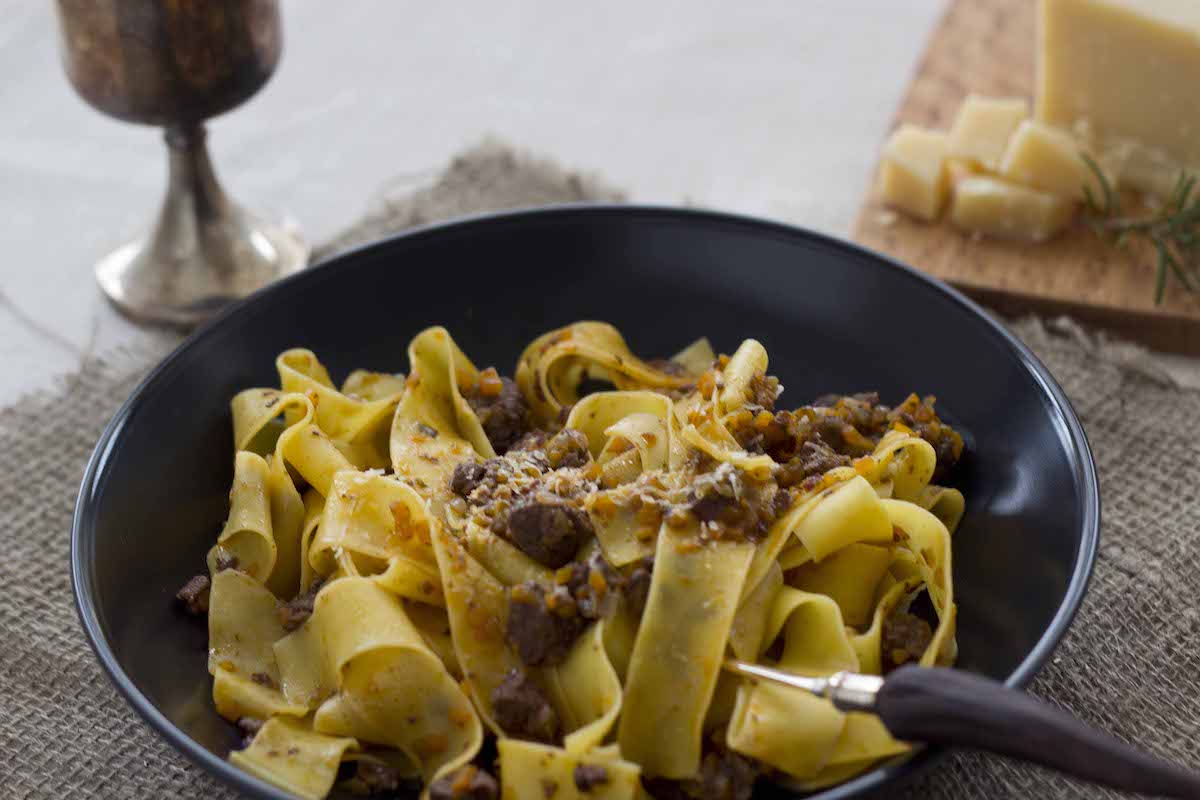
Where to Eat Great Pasta in Florence
As mentioned, it’s easy to find restaurants in Florence with plenty of pasta options on the menu. If what you’re looking for is pasta that you won’t find outside Tuscany, however, the list is much shorter. These are a few favorite spots in the Tuscan capital where you can sample delicious pasta that’s uniquely Tuscan.
- Osteria Vini e Vecchi Sapori (Via dei Magazzini, 3/r): “If you aren’t lucky enough to have a mamma in Florence, don’t worry—there are still some places you can eat just like at a Florentine mom’s kitchen,” says chef and cooking teacher Judy Witts Francini. Francini, who has made Tuscany her home for four decades, is a regular diner at Osteria Vini e Vecchi Sapori for this very reason. There’s a mom in the kitchen, the pasta is handmade, and Francini calls the pappardelle with duck “incredible.”
- Il Tartufo: Inside Florence’s glorious indoor food market, Mercato Centrale, Francini recommends foodies make a beeline for Il Tartufo for the fresh pasta made with truffles. It’s run by the Savini family, a name that’s been synonymous with truffles in Tuscany for four generations.
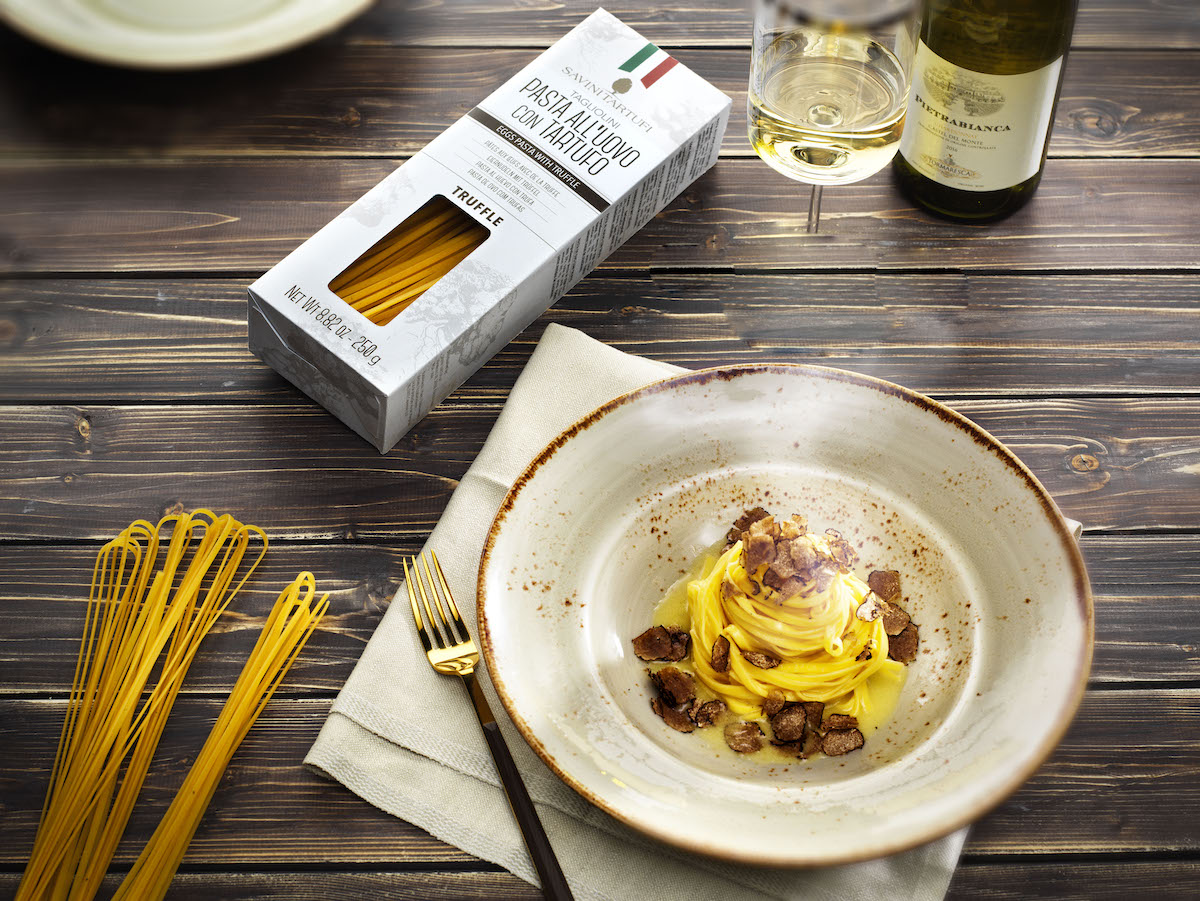
- Osteria delle Tre Panche: Another place that is well-known for making magic with truffles is Osteria delle Tre Panche. There are usually many truffle dishes on the menu, including fresh pasta.
- Osteria Tripperia Il Magazzino (Piazza della Passera, 2): Il Magazzino is the place to go if you’re curious about Tuscan offal dishes but aren’t yet ready to dive into the “food cart lampredotto” deep end. The most notable offal pasta is lampredotto-stuffed ravioli, though there are often pici dishes on the menu, too.
- Trattoria Sabatino: Locals flock to family-run Trattoria Sabatino for its no-frills homemade fare and warm atmosphere. There are communal tables and traditional Tuscan dishes on a menu that changes daily and always features pasta. Look for pici and tagliatelle.
- Trattoria Sergio Gozzi (Piazza di San Lorenzo, 8R): Located on one side of Florence’s Basilica di San Lorenzo is the easy-to-miss Trattoria Sergio Gozzi. The limited menu changes regularly and features many Tuscan favorites. This usually includes a few pastas, such as ravioli Maremmani or pappardelle with wild boar.
- Trattoria da Ruggero (Via Senese 89/R): Another unassuming local favorite is Da Ruggero. The menu at this rustic Tuscan spot changes frequently and usually includes at least a few pastas (like pappardelle with wild hare) among other traditional Tuscan dishes.
- Trattoria 4 Leoni: A few steps away from Il Magazzino you’ll find the lovely 4 Leoni. The pasta dish they’re best-known for is pear-and-taleggio-stuffed ravioli in an asparagus sauce, though the menu regularly highlights other Tuscan classics—including pici and tortelli Mugellani.
- Tamerò: In a city as old as Florence, a restaurant that’s nearly 10 years old is still considered “fairly new” by Francini. Tamerò opened its doors in 2012 with a pizza- and pasta-focused menu, and it manages to earn applause for both. The lengthy pasta menu includes several regional pasta dishes, like pici, pappardelle, and ravioli Maremmani.
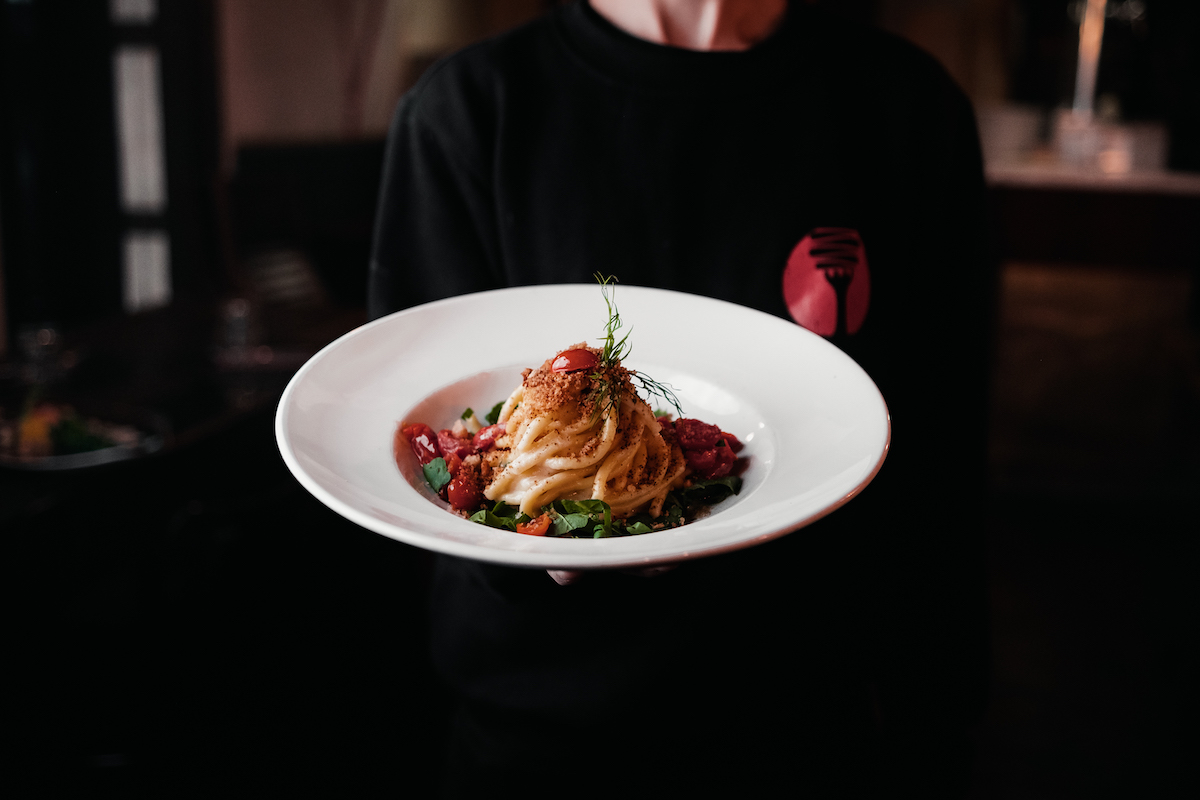
Explore Florence’s Cuisine Like a Local
Taste local pasta and a total of 8+ Tuscan dishes on Devour’s Florence Food & Wine Tour! Our food tour cuts through the tourist menus to show you how Tuscans really eat. Sip prosecco through a centuries-old wine window, learn the secrets of the best negroni, and graze from aperitivo to dessert with 8+ dishes and 6 drinks—including a sizzling bistecca alla Fiorentina that captures the bold heart of Tuscan cooking. This isn’t just another food tour in Florence!
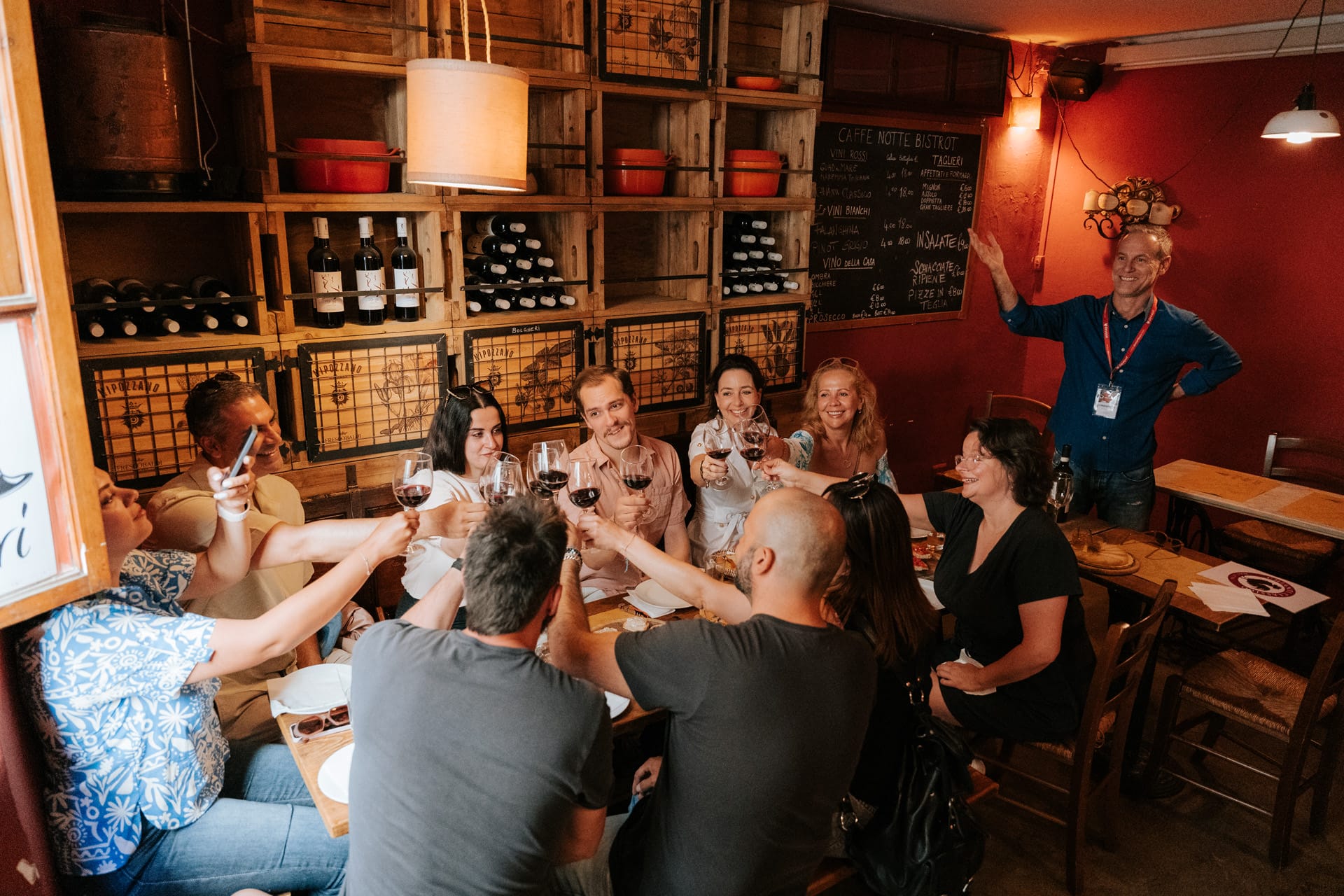
Featured Review: Florence Food & Wine Tour
⭐⭐⭐⭐⭐ “Such a great foodie tour! We visited a lot of places we wouldn’t have even seen if we didn’t do this tour. Our guide was so friendly and she went above and beyond. Lots of food included and all delicious!”
– JadeKennedy on Tripadvisor
Eating Pasta in Tuscany FAQs
What pasta is popular in Tuscany?
In Tuscany, some of the most beloved pasta types are pici and pappardelle. Pici are thick, hand-rolled noodles made from flour and water, and are known for their chewy texture. Pappardelle are wide flat ribbons of pasta that are often served with rich ragùs made from game like wild boar or hare. In Tuscany, you’ll also find regional specialties like tortelli, testaroli, or potato gnocchi called topini.
What is the most famous dish from Tuscany?
One of the most famous dishes from Tuscany is pappardelle al cinghiale, which consists of pappardelle pasta served in a slow-cooked wild boar ragù. It’s a hearty dish that showcases the richness of Tuscany’s culinary heritage.
What is a Tuscan pasta?
“Tuscan pasta” refers to pasta shapes and dishes that originated in or are strongly associated with Tuscany, and are made with local ingredients and traditional techniques. Pasta shapes that are popular in Tuscany include pici (a hand-rolled, egg-free dough shaped into thick strands) and testaroli (a square or triangular pasta dating back to Etruscan times). Tuscan pasta is known for its rustic simplicity, use of local produce, and sauces rooted in tradition, such as game ragùs, garlic-tomato sauces, or simple a butter and sage sauce.

